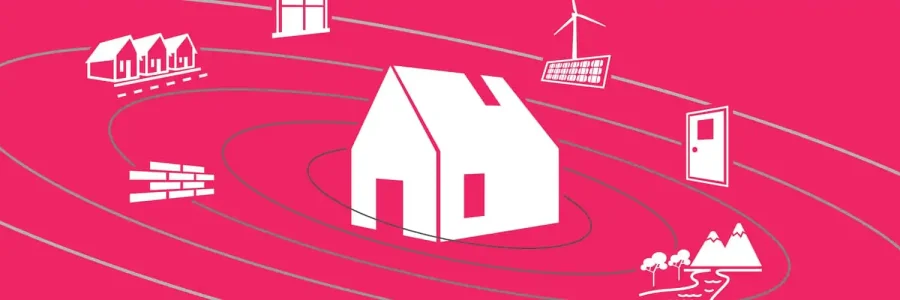
Circular Economy for a Sustainable Built Environment
Learn how the principles of the Circular Economy can be applied to the built environment ranging from products and buildings to metropolitan and regional development strategies.
Enroll
In this course you will become familiar with circularity as a systemic, multi-disciplinary approach, concerned with the different scales, from material to product, building, city, and region.
Some aspects of circularity that will be included in this course are maximizing reuse and recycle levels by closing the material loops. You will also learn how the Circular Economy can help to realign business incentives in supply chains, and how consumers can be engaged and contribute to the transition through new business models enabling circular design, reuse, repair, remanufacturing and recycling of building components.
In addition, you will learn how architecture and urban design can be adapted according to the principles of the Circular Economy and ensure that construction is more sustainable. You will also learn from case studies how companies already profitably incorporate this new theory into the design, construction and operation of the built environment.
Learning Objectives
- Recognize the principles of circularity and their application to the built environment
- Identify the scales of the built environment from materials and products to cities and regions
- Identify the life-cycle phases of building products and how they can be circular
- Discuss design principles in building of products and key aspects such as stakeholders, incentives, timeframes, business models
- Discuss the circular design and development approach for buildings and recognize the impact of a building on society and the environment during its life-cycle
- Recognize the flows at different city scales and how they differ depending on the actors and the local context
- Reflect on the complexity and variety of possible circular solutions in terms of energy, water and waste management
- Analyze and map the different stages and value webs of building materials at the regional level
- Reflect on possible environmental impacts of the different building life-cycle stages and activities along the value web
- Explore the potential of intervening to steer the value web towards more circularity
Effort
3 - 5 hours per week / 6 weeks
Format
Online course, self-paced.
For whom?
The course will be of interest and value to students and working professionals in the fields of architecture, urbanism, and building/infrastructure engineering.
Provider
Delft University of Technology / Faculty of Architecture and the Built Enviromnent
Prerequisites
The course builds upon basic knowledge of architectural and urban design and engineering, as well as general knowledge of Circular Economy theory. For background information we recommend you follow the courses "Circular Economy: An Introduction" and/or "Engineering Design for a Circular Economy".
Hub
Central
Topic
Circular
